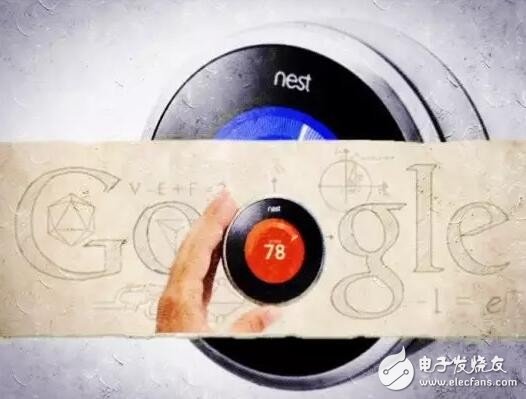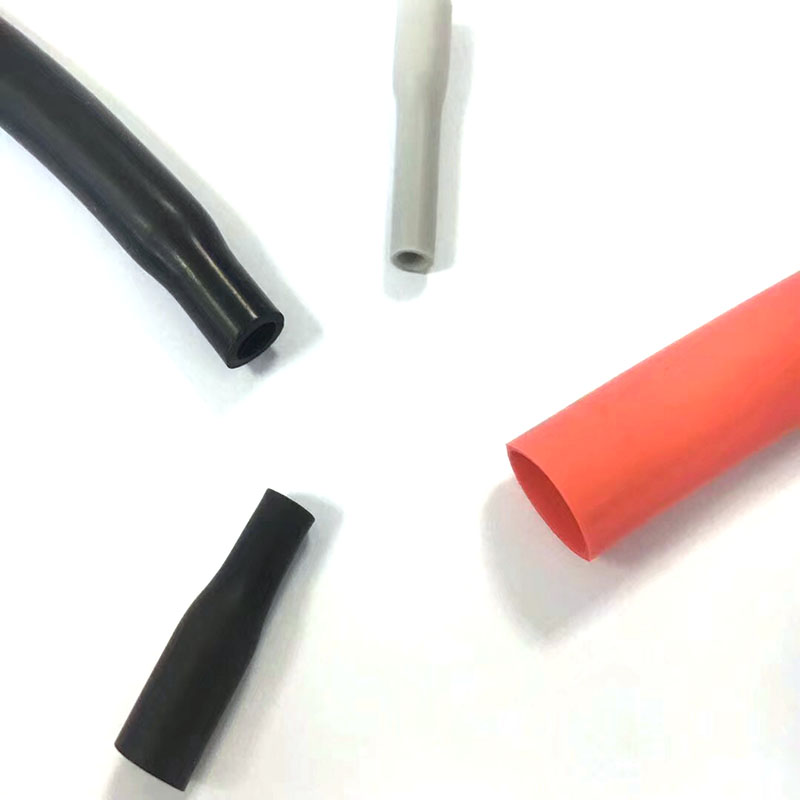This article is the sensation of Li Xiaolan, the founder of the linkage element, on the occasion of the “seven-year itch†of the concept of industrialization of the Internet of Things. It reflects on the twists and turns of the past, faces the existing problems, and sees a bright future.
In September 2011, I (Li Xiaoying) founded the media that focused on the Internet of Things industry. The original intention was not to make the media, but to hope to understand this newly sprouted and freshly baked industry concept. In order to enter the physical field of the industry in the future. However, for a number of reasons, the "Internet of Things Industry Media" has become my main business, and it is five years. Therefore, “Happiness†has witnessed the ups and downs of the Chinese Internet of Things industry in the first few years.
Looking through the relevant materials of the Internet of Things, basically the concept of "Internet of Things" is shown in 1995 by Bill Gates in his book The Road to the Future. However, the "industrialization concept" of the Internet of Things has originated in China, and it must be recognized by the whole world.
In August 2009, former Chinese Premier Wen Jiabao, after listening to Wuxi IoT Industry Research Institute's recommendations on the “Internet of Things Internetization†in a Wuxi inspection, expressed his approval and proposed three specific implementation recommendations. Since then, the "Internet of Things" has moved from an academic concept to an industrial concept. Wuxi has also become the birthplace of the well-deserved IoT industry.
As of August 2016, the concept of industrialization of the Internet of Things has gone through a seven-year history. There is a "seven-year itch" in marriage. It can be understood that 7 years is a running-in period. If you cross this hurdle, you may be one step closer to a successful ending. If you cross, you may have to take a shot. Sometimes I feel that this is an excellent mapping for the development of China's Internet of Things industry. Because of the development of the Chinese Internet of Things industry in the past seven years, it has not been enough to describe the twists and turns.

The joy and sorrow that the Internet of Things brings to Wuxi
First of all, let's talk about Wuxi, the birthplace of the Internet of Things industry.
It can be said that many early IoT practitioners are very emotional to Wuxi, including me. Because Wuxi is the beginning of the cognitive Internet of Things for most practitioners. But it should be said that Wuxi has achieved the Internet of Things, and the Internet of Things has also achieved Wuxi. At the same time, Wuxi has destroyed the Internet of Things, and the Internet of Things has also ruined Wuxi. How to explain this? In China, anyone who knows the Internet of Things knows that its birthplace is Wuxi, but then it will say: “Wuxi represents the traditional Internet of Things,†especially the entrepreneurs who participated in the Internet of Things industry after 2014. It means that "one mention of the Internet of Things, the first thing that people think of is smart meter reading, RFID, tracking and traceability, etc., so we are more willing to mention the Internet of Everything."
This may be the "black pot" that must be backed up as the originator of the mountain!
Why is it a black pot? Because as the birthplace of China's Internet of Things industry, Wuxi has undertaken a large part of the "industrialization test" work and responsibility. However, many industrial conditions were not mature at the time.
First, the technical route of the Internet of Things is still unclear. Is it a three-tier architecture, or a four-tier architecture; it is similar to the US M2M, including only the sensing layer, or including the public network and a wider range of information system integration is still in dispute.
Second, there is no clear entry point, so simply "swallow the date." In other words, most practitioners know that the ultimate experience brought by the Internet of Things is that all people and things can be connected and connected through the Internet, but they don't know where to start. Therefore, the imaginary ultimate network was divided into countless small systems and tested, called the IoT industry demonstration pilot project. China's first three Internet of Things demonstration projects—sensing civic centers and smart airport security inspections—was implemented by Wuxi in January 2010. Since then, this initiative has also been adopted by the central government, promoted throughout the country, and continued until this year.
Third, many supporting technologies and products of the Internet of Things are not yet mature. For example, sensor technology, the concept of smart sensors was just beginning in China, and there are very few Chinese local sensor companies that master MEMS technology. For example, short-range wireless transmission technology, RFID, NFC, ZigBee, Bluetooth, Wifi, PLC, etc. are involved, and have been "sharp" other technologies at different times, but each has its own limitations. Costs and application scenarios like RFID, ZigBee's standards are not uniform, Wifi's high power consumption, and Wifi has just been lifted in China, PLC's interference is so big, and all of them hinder the development of the Internet of Things industry. Another example is the cloud computing upgrade of IT technology. They are still in chaos, let alone supporting the development of the Internet of Things. And the concept of big data at the time was still in the academic stage, because the development of its technology base Hadoop has just begun.
Fourth, most practitioners are eager to achieve success. After the 2008 financial tsunami, Chinese companies wanted to quickly find the next economic growth point. As a result, the real estate industry developed at the time, and China’s housing prices began to rise in 2008. Under such environmental influences, many IoT practitioners hope that the Internet of Things industry can also be like a real estate, allowing it to "get rich overnight." This has brought the Internet of Things industry to an unhealthy development route to a certain extent.
1) The Internet of Things industry did not explode as expected.
2) Wuxi did not explode as soon as everyone expected;
3) IoT companies did not explode as they imagined.
And Wuxi, a city that once had a lot of scenery because of the Internet of Things, took part in the original sin of this consequence. Moreover, its dedication at the time, such as the various support provided by the "530 Program" for Internet of Things entrepreneurs and enterprises, seems to have become a joke.
However, Wuxi did not give up the Internet of Things industry. After 2013, Wuxi does not seem to make a big splash, but it is still secretly exerting its strength, or it is exploring in a more solid direction. Especially in 2016, when China was called the real “Year of Internet of Things Industry Developmentâ€, Wuxi not only proposed an action plan to build an “Internet of Thingsâ€, but also upgraded the 7th IoT Expo to “World Internet of Thingsâ€. The Expo has once again become the core of the gathering of the Internet of Things industry.
2009-2013, the government-led laboratory stage
Second, let's take a look at the advanced course of the Chinese Internet of Things industry during these seven years. I have always been inclined to divide it into three phases.
The first phase (2009-2013) can be called the “laboratory-led laboratory†stage, which is the stage in which Wuxi has an absolute dominant position. This stage can be divided into two subsections.
The first section is 2009-2011. Under the guidance of the State Council, various ministries and commissions, as well as various provinces and cities, have introduced policies such as the IoT special fund support, the Internet of Things demonstration pilot project, and tax incentives to promote the development of the Internet of Things industry. Among them, the “IoT Application Pilot Demonstration Project (Project)†should be said to provide a test field for the industrialization of the Internet of Things from conception to landing. According to incomplete statistics, between 2010 and 2016, there were more than 1,000 IoT demonstration pilot projects planned and built by central ministries and commissions and local provinces and cities, involving more than 10,000 projects. Of course, this really supports a group of IoT companies, especially in the early days. I remember that when I visited an IoT company in 2012, the company had a department called “Enterprise Development Departmentâ€. The main work of the department was to study national policies and apply for various support funds and projects. At that time, this was the main income of the company. source.
The second section is 2012-2013, the Chinese government has introduced the “make market†plan of 80 billion Internet of Things industry – to build a smart city. China's Ministry of Housing and Urban-Rural announced two batches of smart city pilot cities in the end of 2012 and the second half of 2013, a total of 193. Each pilot city plans to build pilot projects in batches. In an instant, there have been 10,000 “wisdom†projects started. The Internet of Things companies at that time were relying on such support to go step by step.
2014-2016, the dominant stage of the local market
The second phase (2014-2016), partially entered the market leading stage. However, the way this phase started was quite intriguing, starting with Google’s acquisition of Nest in January 2014. This incident has become the most obvious watershed in the development of China's Internet of Things industry. At the same time, it is also the first meeting of the power of China's Internet of Things and the power of the international Internet of Things.
Of course, some people still believe that the concept of Internet of Things is not prevalent in other countries. However, as far as I can see, the countries that dominate the world in the field of information technology have a layout in the Internet of Things industry. Among them, China and the United States should be at the forefront, but their respective formulations are different. It is also different. For example, the way American companies cut in is more top-down, starting with supporting technology and products; while Chinese companies choose to start from the bottom up and start with applications.
One of the reasons behind this may be attributed to the fact that most Chinese people understand the Internet of Things: it is not always a new technology, but the integration of existing technologies. But overall, everyone is exploring the Internet of Things from different angles. After Google’s acquisition of Nest, perhaps more people can see the first step in implementing the Internet of Things – hardware intelligence.
Prior to this, China's participation in the Internet of Things industry was dominated by large enterprises, such as telecom operators and large-scale informatization integrators engaged in B2B services. Even start-up companies are also affiliated with the three or fourth industries under the government. As mentioned above, the understanding of the Internet of Things application at that time was a complete system. Everyone was vying to be an “Internet of Things Service Operatorâ€, and all the IoT projects that were profitable at the time were government-supported, so the capital SMEs that are not strong enough, have no resource background, or entrepreneurs have no chance at all, and Internet companies engaged in B2C business are not looking.
However, after Google’s acquisition of Nest, China’s Internet giants seem to wake up instantly and start to appear frequently in various activities and forums of the Internet of Things. At the same time, the original investment institutions in the Internet circle have also begun to be active in the Internet of Things circle. This has brought unprecedented opportunities to grassroots entrepreneurs.
Therefore, in 2014, the “subversion†that has been explored in the Internet of Things industry showed the first sign: resource shift. The “grassroots†who only have 20% of capital and resources but occupy 80% of the population have become the main force of the Internet of Things industry. Under the instigation of capital, all kinds of strange and whimsical smart terminal ideas Full of the market; traditional manufacturing, and even the traditional IT industry can not understand what is happening in the market, and instantly filled with a sense of crisis. At this time, the Internet of Things seems to have finally come up with the original idea of ​​the initiator. After all, resource allocation does not change, how can we talk about subversion? !
Also in this year, Shenzhen has become the focus of the Internet of Things industry, because 80% of intelligent hardware entrepreneurs are gathered in Shenzhen. Shenzhen has instantly become a representative of China's technology cities. I remember a magazine named "Dubai Vision" in 2015, which listed the eight most representative technology cities in the world. Among them, China is listed in Shenzhen. And it is said that at the 2016 CES show in Las Vegas, a quarter of the companies are from Shenzhen, China.
However, at this stage, the breakthroughs in China's Internet of Things industry are concentrated in areas related to people's lives. For example, 100% of white goods listed in China's new listings have been intelligentized this year; 40% of black household appliances have been intelligent; small household appliances are gradually moving toward Intelligent; small-scale, portable medical equipment on a large scale; smart home industry is hot, although only staying in the industry. In the municipal, people's livelihood, industry, agriculture, etc., the original buyer is the government, or the field of enterprises, the breakthrough is still limited. When I visited an agricultural IoT company a few months ago, I learned that since the beginning of 2016, the Chinese government has banned financial support for the agricultural Internet of Things project, and the promotion of the agricultural Internet of Things has entered a difficult stage.
After 2016: The Internet of Things ushers in the second spring
In the third stage (after July 2016), the entire IoT industry entered a stage of benign development. Of course, when it comes to development, every stage is actually developing. However, the previous development should be said to be too ups and downs, too devious, too unhealthy, so it cannot be regarded as real development. In 2016, it should be said that all kinds of conditions are relatively mature after development, so it is called "benign development."
In July 2016, there was a big event that shocked the tech circle: Softbank bought the world's leading mobile phone chip designer arm for $32.2 billion. Softbank chose to acquire arm at this time, not because it is the leader in the mobile phone chip field, but because it created an Internet of Things operating system - Arm Embedded OS. In other words, Softbank intends to be the entire Internet of Things era.
This incident is not so much the trigger for the third advanced advancement of the Internet of Things industry, but rather the result of the Internet of Things industry's exploration over the past seven years. Because many conditions and variables for realizing the Internet of Things in 2016 are almost complete.
1) The cornerstone of the Internet of Things - cloud computing, the technology is basically mature, and has formed a distinct industrial structure;
2) Application support of the Internet of Things - Big data, the underlying technology architecture has been relatively stable, the status of Hadoop has been established, and in some areas such as finance, environmental protection, electricity, etc., there are already mature application cases;
3) The core technology of the IoT transport layer - NB-IOT and 5G can be commercialized, which is a great leap for the development of the entire IoT industry;
4) Awakening in manufacturing. This should be said to be extremely important for the development of the Internet of Things industry. Because the core of the Internet of Things is “thingsâ€, if the producers and manufacturers of “materials†do not accept new technologies and do not accept changes, they will slow down the development of the entire industry.
More importantly, this year, China's Internet of Things industry began to go hand in hand in the industrial and civilian sectors, rather than just heavy industry applications before 2013, and not as popular as in 2014 and 2015.
Behind this, it should be said that it is the joint promotion of government power and market forces. For example, in the last two years, the Chinese government has launched a series of support policies and demonstration pilot projects for Industry 4.0 and Smart Production. Because the industry is not reformed, the application of the Internet of Things will not go deep. Just like the Internet era, no matter how it subverts the traditional industry, it only changes the channel of information dissemination and the trading channels of the consumer sector. While industry occupies 80% of China's economic share, the changes in the industrial sector will bring more value than the consumer sector. In short, at this stage, in China, the government and the market began to work together to promote the development of the Internet of Things industry.
However, due to China's economic characteristics, the core industry has always been dominated by the government, so after the start of industrial transformation, it may once again refresh the ranking of Chinese technology cities. Of course, this time, not only Wuxi and Shenzhen, but many other cities such as Shanghai, Hangzhou, Nanjing, Beijing, Chengdu, etc. have already been eyeing the Internet of Things, so it is difficult to judge who will win in the end. However, from the current situation, Wuxi’s determination and intensity seem to be even greater.
KEYUACE specializes in the production of industrial Silicone tubes, Silicone heat shrink tube, Medical grade silicone tubing, Medical-grade silicone Heat Shrink Tubing , Food grade silicone tube.
Silicone tube

Silicone heat shrink tube

Silicone tube / medical silicone heat shrink tubing / silicone heat shrinkable tube
Dong Guan KE YU New Material Technology co.,LTD , https://www.insulationtubing.com